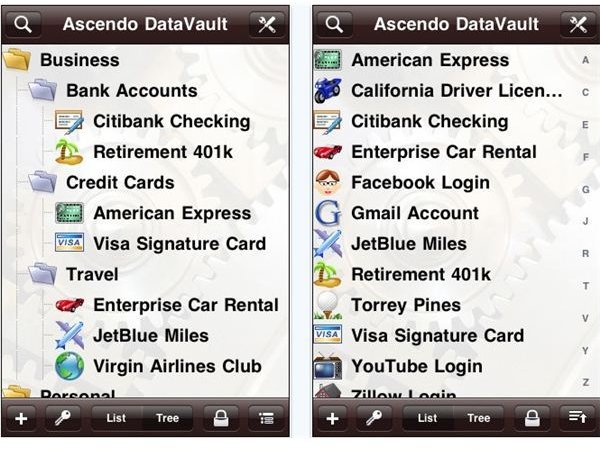


#DATAVAULT PASSWORD MANAGER FREE ANDROID#
DataVault can be used on every device, whether it’s running on Windows, Mac, and iOS app, or an Android app. It’s basic and vague.Īnd while the field names are already defined in most of the programs, DataVault password manager requires you to type them manually, like ‘Username’ and ‘Password’, and insert the values next to each field. Though I didn’t like the form where DataVault password manager asks you to submit the details. Just click the ‘Add’ button on the toolbar and fill the details in the following screen before hitting ‘Save Item’. That way, you’ll never have any trouble finding a specific credential. Similarly, if you have any personal notes to save, add them in the ‘Notes’ folder under the ‘Personal’ category. And the blue folders are sub-categories containing the data under a specific category.įor example, you can save all your work-related credentials in the ‘Login’ folder under the ‘Work’ Category. The yellow folders indicate different categories like ‘Personal’, ‘Work’, etc. The middle portion of the screen is nothing but vast white space.Īt first, you might find the navigation bar a bit jumbled, but it’s actually well organized. There is a menu bar at the top, the toolbar is just below it, and the navigation bar is on the left side of the screen. So, you shouldn’t have any problem doing that.īut what might surprise you a bit is the user interface, which looks like an old school MS Office program.

#DATAVAULT PASSWORD MANAGER FREE INSTALL#
The initial setup is exactly the same as you see in other programs – install the Datavault password manager software, create a master password, and you’re ready to go. There is also an app available for Windows or Mac, which means you can store your passwords across multiple devices. It is available for mobile devices on Android and iOS. DataVault, as I mentioned in the beginning, is extremely easy to use and can be operated even by a novice.


 0 kommentar(er)
0 kommentar(er)
